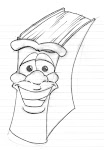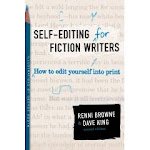Show and tell. This is one of the most important rules in writing fiction. Always “show” the story, never “tell” it. Of course, there are times when passages of “telling” are necessary (i.e. in narrative summary). There are some incidences where it’s acceptable, such as in transitions. Or perhaps there’s a jump in time that needs to be conveyed. But for the most part, the more a writer “shows,” the better.
What is showing? Showing takes place in real time; we see things unfold as they happen. Showing shows us where we are, gives us a location we can picture. Then there’s action, something that happens, and with that comes dialogue.
Ever hear the saying: Actions speak louder than words? The same rule applies to writing. Actions bring characters to life, it makes your characters believable, and it makes us a part of the story and a part of them. We’ll learn more about a character and become more connected to them by what they do, rather than by what the narrator “tells” us they do. It also brings in the five senses: touch, taste, see, smell, and feel.
Here’s a brief example below. Both lines are saying the same thing, only one is “telling” and the other is “showing:”
TELLING: Michael was scared. But he tried to hide it.
SHOWING: Michael took a deep breath and puffed up his chest. But his hand trembled when he reached for the doorknob. He stuffed it in his pocket, then turned to his companion and chuckled.
Which lines engage you more as a reader? Notice the second lines show “action,” whereas the first lines “tell” what he’s feeling.
One tip I always give to clients on how to show and not tell is to start with the object and have it "do something." Another key is to cut the "was" phrases.
BEFORE: It was early in the morning. The sun was coming up over the horizon and shining on the crops of flax.
Here, the object is the sun. In the second sentence we begin with the "object," but we have that troublesome "was" phrase, which makes this passage "telling."
AFTER: The morning sun cast lances of light over the blue and purple valleys. A breeze carried the scent of flaxen crops and manure to the early risers.
Notice the deleted "was" phrases and how we start with the object and we have that object "do something." Also, notice how we had room to add more from the five senses, such as smell.
That example was a bit complicated, so let's break it down into something more simple.
BEFORE: The breeze was cold.
AFTER: The Canadian breeze sliced through his coat and nipped his skin.
Now, I'm not saying these can't be worded better, but the idea is to have the breeze "do something." In this case, the breeze is slicing and nipping.
Hope this has been helpful, and if anyone has something to add, please do!
Happy writing!
Sandi
Monday, March 15, 2010
Subscribe to:
Post Comments (Atom)












Good pithy helpful post.
ReplyDelete